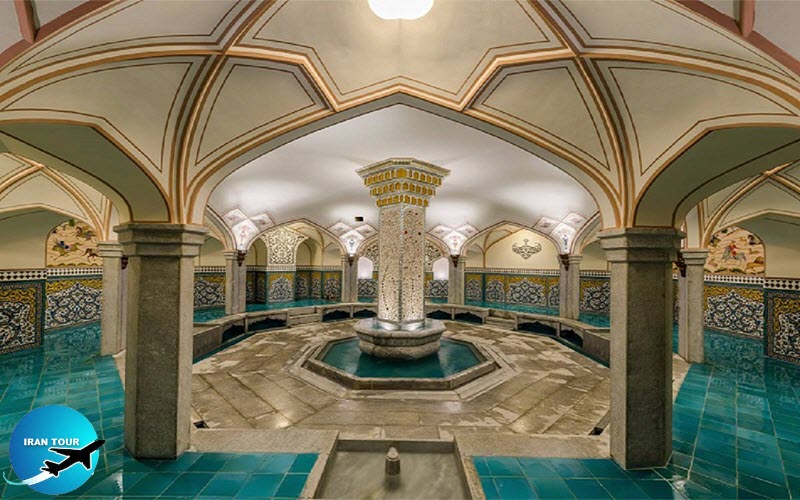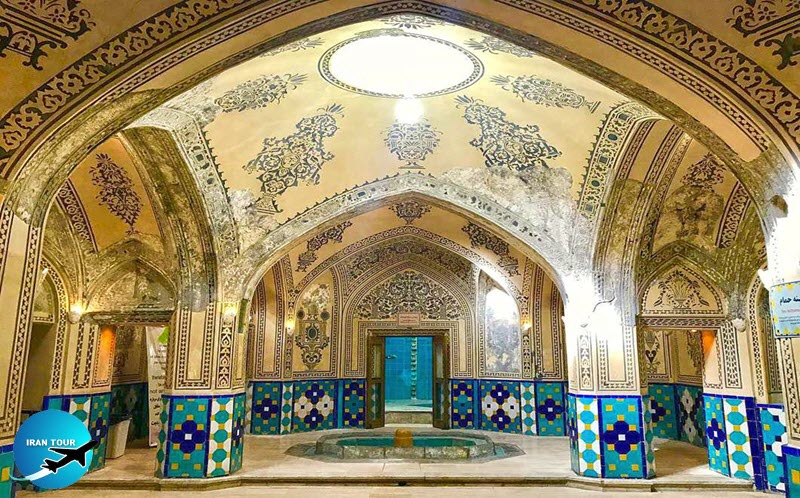Copyright 2020 - 2021 irantour.tours all right reserved
Designed by Behsazanhost
The Old Bathhouses of Esfahan
Hammams
Chevalier Jean Chardin, a French
The hammams were divided into two main sections, the
In
The water necessary for Hammams came from wells and was pulled to the
The hammams remaining from the Safavid era include
Hammam-e Shah, Hammam-e Shahzadegan, Hammam-e Shah Ali, Hammam-e Sheikh, Hammam-e Sheikh Ali Khan, and Hammam-e Ali Gholi Agha, the last of which has recently been converted to an ethnological
The Old Bathhouses of Esfahan Delightful Centers of the Past for Preserving Sanitary and Public Health
In Islamic urban planning, a special role for the public bath (Hammam) was considered due to the importance attached to cleanliness in Islam. According to a Hadith (Islamic narration), 'Cleanliness is a sign of faith'. This is why during the different eras many public baths were built in Esfahan, but most of them are not in use today. According to Chardin (17th century), the total number of baths in Esfahan exceeded 273, but unfortunately, at the present time, there
 |
Their location was of high importance to the residential quarters, and the have been some endeavors to have as many baths as mosques. To prepare able temperature for Hammam, depth was very important to minimize the
1- A public area called; Garm Khaneh (thermal house) was run by an experienced laborer called:
2- A kind of traditional massage (
 |
3- The hair cut and shaving was done mostly by
4. Removing the additional hair from the body was done by using a kind of mixture made from orpiment (arsenic trisulfide), lime powder, and water which is called
5- Phlebotomy (Hajamat or
7- A space named; Bineh for the reception of people where a small space was provided for their bags and shoes, and after they finished bathing
8- The public thermal house was heated by an underground system of ducts in which the hot air was circulated with natural suction (wind tower) from the stove house called
9- There were some platforms all around the thermal house that after washing, clients could sit on them, and be washed a number of times with a soft cotton mitt and soap by a laborer.
10- The bathhouses were sometimes a place for bonesetting (Shekasteh Bandi) and circumcision (Khatneh) of boy children. To make the indoors more pleasant, because of the high humidity and temperature, it was common to do some paintings with different motifs about the daily habits like Ancient sports, hunting scenes, battlefields, some European people or buildings, some historical sites, and some astrological signs
11- There was a smaller pool with warmer water and a small entrance for the initial washing of the people; the quality of its water, in some baths, was not so good.
12- A public place used as the water closet or toilet called; Kor-
 |
13- The lighting system was also of high importance during the day, by some particular natural lighting systems called; Jam Khaneh made of earthenWare. They were in the form of hemispheric shapes with tens of small openings that were covered by small convex glasses which optically functioned as convergent lenses for conducting the concentrated light indoors to light up and disinfect. At nights and in the early mornings, there was a lighting system lit up by burning oil in some tiny particular places, consisting of a small lamp made of plaster burning tallow called; Pieh Souze (tallow-burner)
14- The initial space of the bath (
15- There was a particular chamber for the towels.
16-There were horizontal covered ducts. existing all around the circumference of the stove house to heat the space with
17-The hydraulic system, including a wooden wheel and a big pail, was installed over a well and a ramp on the adjoining
18- A space for using natural dyes like henna for the hair, hands,
The baths were also regarded as the initial and terminal points for travelers who decided to come back to the city or to leave it to take a trip, for cleaning their bodies from the dust of the road.
To sum up, there was no running water in the houses or plumbing systems to bring water from a reservoir to the homes, thus
 |
Esfahan 'Hammam-e-Sheikh' (bathhouse) With a Historical Enigmatic Heating System
About a hundred meters south of Nezam-
Etymologically, the name Sheikh is related to Sheikh Bahaie (elite of his age) to whom the design of the bath was attributed, but his death in the history books 1S 1621 A.D. which is 34 years before the inauguration of
There is an old manuscript written by Sheikh Bahaie that elaborated on the construction of bathhouses, but he employed so complicated and unfamiliar technical terms that understanding its content is very difficult for experts. One of the topics, which he has emphasized, was the optimum method to isolate the inner space of the bathhouse in connection with the outer space. It should be noted that previous designers in order to isolate baths used to build them at lower elevations than the datum point of the ground level to minimize the exchange of energy between the inner and outer spaces.
Apart from all this, if we suppose the hypothesis of self-heating is correct, the prevailing belief among common people expressed by an exaggerated claim of an atomic heating system is considered. A more acceptable theory is the biomass' (bio-energy) theory that can be assumed; a utility that has existed in the civilized world of China for at least one thousand years. The method is based on the exploitation of energy from waste materials. In this connection, we can assume that an underground earthenware piping system connected to the toilets of Jam-e- Mosque', 130 meters from the torch of the bathhouse, and by way of natural suction, methane gas (CHA) and some
The present dimensions of the site are 40 meters by 24 meters and there is no access to the inside. It was an active bathhouse up to 30 years ago, and it is narrated that there was a stone basin decorated with some carvings of holy prayers. To laypeople, whoever drank a bowl of water from it, all magic spells could wane and one would get one's wishes soon.
- Details
- Category: Museums of Esfahan